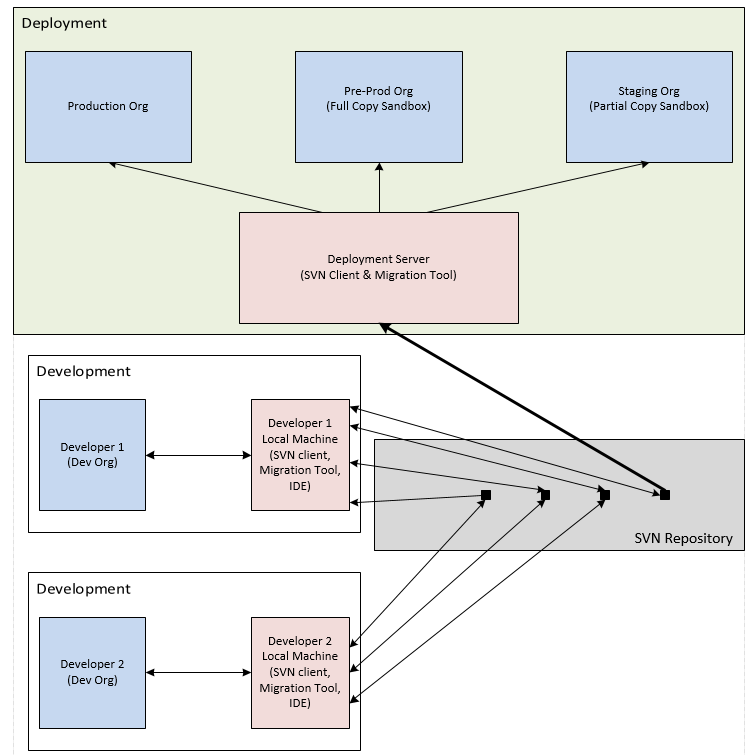Apologies for the broad question, but there's considerable detail to add here in the body that wouldn't fit in the title.
I need to craft a deployment approach for our dev sprints that aligns to our Enterprise IT standards and factors in the following :-
- Source control using Subversion (non-negotiable, i.e., I can't switch to Git)
- Scriptable deployment packages that can be run in by an Ops team that doesn't have Salesforce knowledge (pretty sure I'll be using Force.com Migration Tool/Ant for this)
- Reconciles against the Production Org for any config changes that our App Support team (who are all admins) make directly in that instance (sadly, that happens)
I can work out the process for getting code in and out of SVN to a Dev sandbox (largely based on https://developer.salesforce.com/page/Using_Force.com_with_Subversion_for_Team_Development) and I know how to use Force.com IDE and/or Mavensmate to select the metadata I am working on, both of which helpfully build the package.xml manifest needed for deployment.
The challenge, then, is to define a process that encompasses all the three streams (packaging for deployment, source control and Prod reconciliation). To this end, I've started with the diagram shown below, but it still doesn't cover all requirements.
Anyone able to help plug the gaps?

